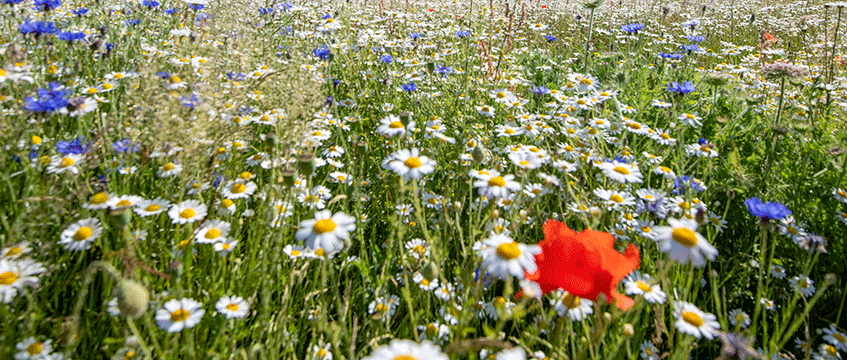Developers will create the equivalent of 23,500 football pitches of improved biodiversity each year, according to an analysis of government figures.
Under the biodiversity net gain laws, set to come into force in November, developers are required to mitigate the impact of their projects by improving land for wildlife, by investing in measures to increase the biodiversity score of sites by at least 10%.
Research from Joe’s Blooms, a digital platform that helps property developers comply with the regulations, shows that this will secure more than 15,000ha of biodiversity in England each year.
Government figures show that 5,428ha of habitat would be created per year, and 9,644ha per year of habitat damage would be avoided per year
The data shows the biggest uplifts will be seen in the South East, which will gain 2,700ha, and the East of England, with 1,900ha.
Birmingham, Leeds, and Manchester will see the most significant increase in green spaces as new developments continue to expand.
The report found that, each year, Birmingham can expect to see the equivalent of 342 football fields of natural habitat secured, Leeds 260 and Manchester 195.
Robin McArthur, chair of the Joe’s Blooms advisory board, said: “This analysis demonstrates that biodiversity and nature recovery can be a central part of housing development. It’s important that developers of all sizes are supported to deliver these ambitious targets that will create more green spaces and enhance plants and wildlife.”
|
English regions |
Maximum development (in ha) |
Total habitat loss avoided |
Total habitat created |
Total habitat secured each year (in football fields) |
||
|
(In ha) |
(In football fields) |
(In ha) |
(In football fields) |
|||
|
England |
16195 |
9621 |
15033 |
5416 |
8463 |
23496 |
|
South East |
2997 |
1781 |
2783 |
1002 |
1566 |
4349 |
|
East of England |
2089 |
1241 |
1939 |
699 |
1092 |
3031 |
|
South West |
2009 |
1194 |
1866 |
672 |
1050 |
2916 |
|
East Midlands |
1848 |
1098 |
1716 |
618 |
966 |
2682 |
|
North West |
1803 |
1071 |
1673 |
603 |
942 |
2615 |
|
London |
1788 |
1062 |
1659 |
598 |
934 |
2593 |
|
West Midlands |
1574 |
935 |
1461 |
526 |
822 |
2283 |
|
Yorkshire and the Humber |
1454 |
864 |
1350 |
486 |
759 |
2109 |
|
North East |
640 |
380 |
594 |
214 |
334 |
928 |
|
National Parks |
189 |
112 |
175 |
63 |
98 |
273 |
Natural habitat secured by metropolitan areas
|
Metropolitan district |
Maximum development (in ha) |
Total habitat loss avoided |
Total habitat created |
Total habitat secured each year (in football fields) |
||
|
(In ha) |
(In football fields) |
(In ha) |
(In football fields) |
|||
|
Birmingham |
235 |
140 |
219 |
79 |
123 |
342 |
|
Leeds |
179 |
106 |
166 |
60 |
94 |
260 |
|
Manchester |
135 |
80 |
125 |
45 |
70 |
195 |
|
Sheffield |
122 |
72 |
113 |
41 |
64 |
177 |
|
Bradford |
94 |
56 |
88 |
31 |
48 |
136 |
|
Kirklees |
90 |
53 |
83 |
30 |
47 |
130 |
|
Wakefield |
88 |
52 |
81 |
29 |
45 |
126 |
|
Salford |
82 |
49 |
77 |
27 |
42 |
119 |
|
Coventry |
81 |
48 |
75 |
27 |
42 |
117 |
|
Liverpool |
75 |
45 |
70 |
25 |
39 |
109 |
To send feedback, e-mail piers.wehner@eg.co.uk or tweet @PiersWehner or @EGPropertyNews











